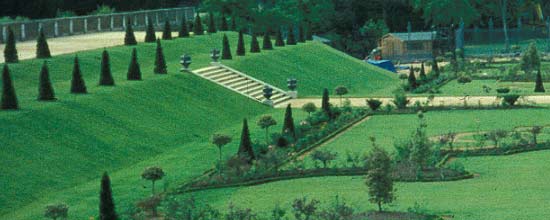

Guidelines for Reconstructing Cultural Landscapes
Topography + Vegetation

Topography
![]()
Reconstructing a non-surviving topographic feature to depict the documented historic appearance.
![]()
Reconstructing topographic features that cannot be documented historically or for which inadequate documentation exists.
Vegetation
![]()
Reconstructing a non-surviving vegetation feature to depict the documented historic appearance. Although historic genus, species and cultivar are preferable, substitute materials may be used as long as they recreate the historic appearance--namely, habit, form, color, texture, bloom, fruit, fragrance, scale and context. For example, reestablishing a lost corn field using a contemporary cultivar having the same habit and growth cycle.
![]()
Reconstructing vegetation features that cannot be documented historically or for which inadequate documentation exists. For example, installing a “period” herb garden.
Using substitute materials that do not convey the appearance of the historic vegetation.
Not reconstructing a documented vegetation feature; or replanting a feature but altering its historic appearance.
Failing to identify and interpret the reconstruction of a lost vegetation feature, thus confusing the public understanding.